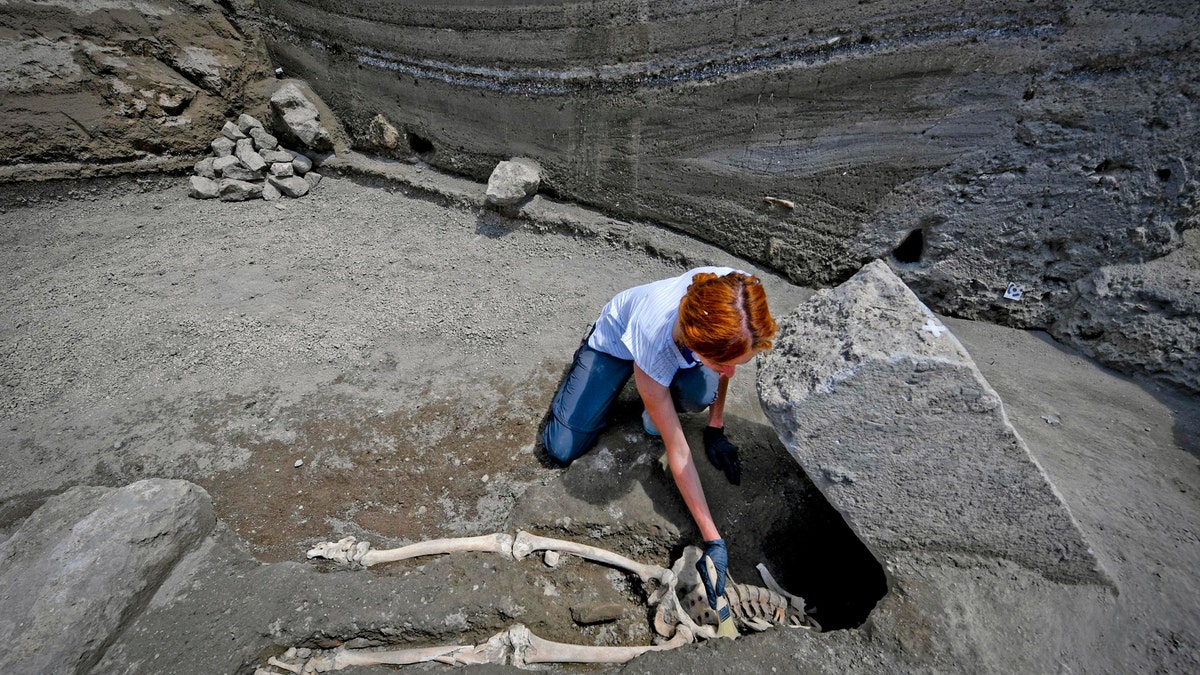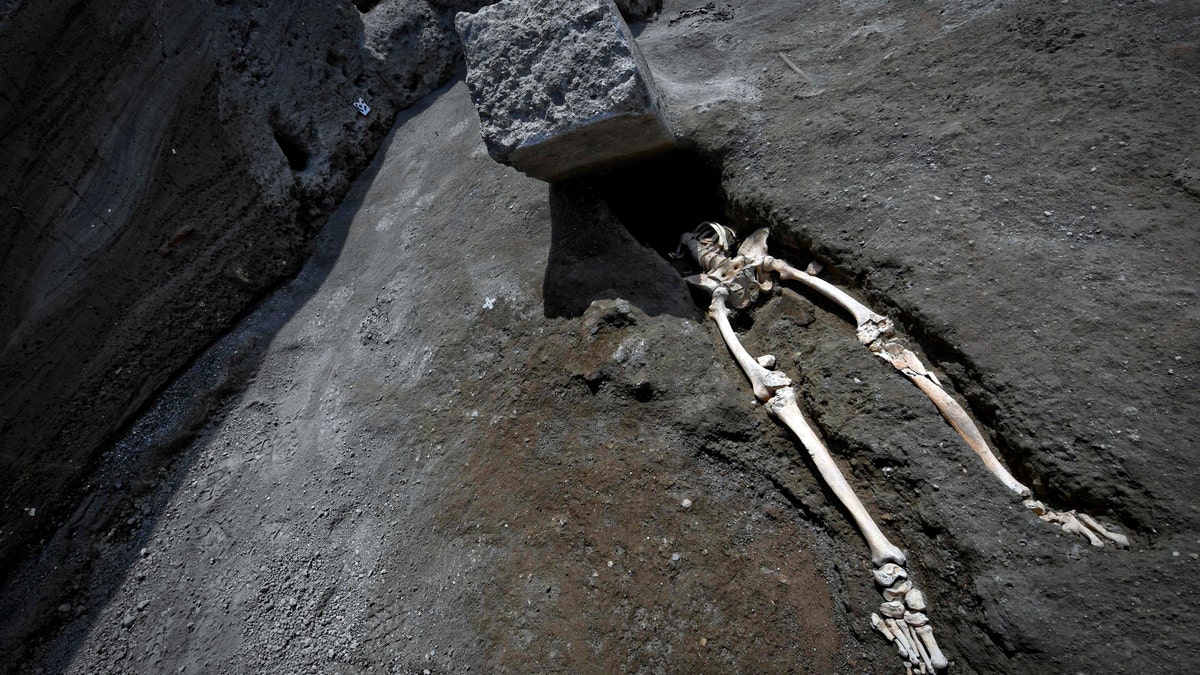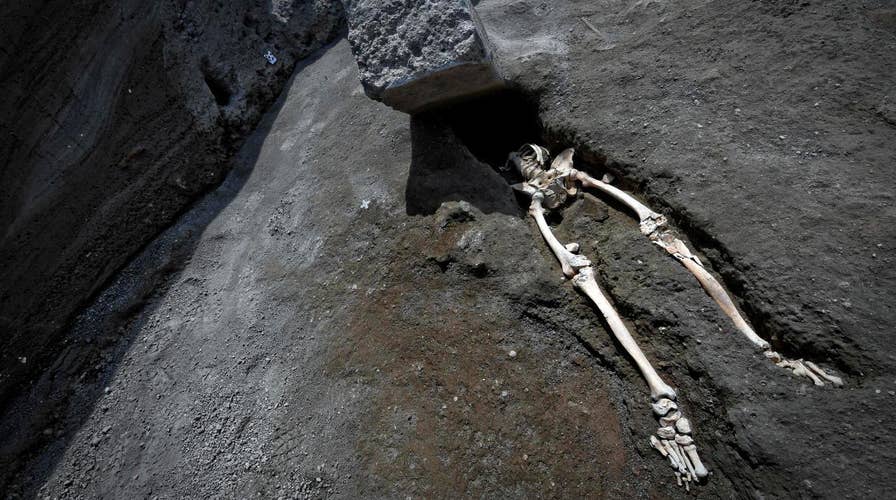660-pound flying stone killed a man in Pompeii
Archaeologists have uncovered the skeleton of a man crushed by 660-pound stone during the eruption of Mount Vesuvius.
The discovery of a skeleton at the famous Pompeii archaeological site in Italy has revealed the gruesome fate that befell one of the ancient victims of the Mount Vesuvius eruption.
A new excavation at the site unearthed the skeleton of a man who was crushed by a large block of stone while attempting to flee the eruption in 79 A.D.
In a Facebook post on Tuesday, officials explained that the man’s body had been “hurled back” by the force of the volcano’s pyroclastic flow — a mix of hot lava fragments, ash pumice and volcanic ash. “A formidable stone block (perhaps a door jamb), violently thrown by the volcanic cloud, collided with his upper body, crushing the highest part of the thorax and yet-to-be-identified head, which lie at a lower height of the lower limbs, and probably under the stone block,” they wrote.
EXTRAORDINARY POMPEII DISCOVERY: RACEHORSE REMAINS FOUND AMONG ANCIENT CITY'S RUINS
A door jamb is the vertical part of a door frame.

Anthropologist Valeria Amoretti works with a brush on a skeleton of a victim of the eruption of Mt. Vesuvius in A.D. 79, which destroyed the ancient town of Pompeii, at Pompeii' archeological site, near Naples, on Tuesday, May 29, 2018. (Ciro Fusco/ANSA via AP)
Initial analysis of the skeleton indicates that the man was over 30 years of age. He also suffered an infection of the tibia, which may have caused walking difficulties, impeding his escape.
Pompeii director Massimo Osanna drew comparisons between the man’s remains and a skeleton found in the site’s House of the Smith. “These were the remains of a limping individual — he too was likely impeded in his escape by motor difficulties, and left exposed at the time in situ,” he explained.
'EXTRAORDINARY FIND' MADE IN POMPEII BATH HOUSE
The skeleton is the latest gruesome find at the ancient city, which was devastated following the eruption of Mount Vesuvius. Pompeii was quickly buried by volcanic ash, killing about 2,000 of the city’s residents, according to History.com.

The legs of a skeleton emerge from the ground beneath a large rock believed to have crushed the victim's bust during the eruption of Mt. Vesuvius in A.D. 79, which destroyed the ancient town of Pompeii, at Pompeii's archeological site, near Naples, on Tuesday, May 29, 2018. (Ciro Fusco/ANSA via AP)
The site remained untouched for over 1,500 years until its rediscovery in the 18th century. During the 19th century, archaeologists used plaster to take casts from the vacuums that surrounded skeletons found in the compacted layer of ash. Left behind by the decay of organic remains, the vacuums offer an eerie snapshot of the volcano victims’ final moments. National Geographic notes the plaster casts’ lifelike poses show some victims, for example, crawling, or seated with head in hands.
ANCIENT ROMAN BOXING GLOVES DISCOVERED NEAR HADRIAN'S WALL
Archaeologists recently unearthed the final resting place of an ancient racehorse among the ruins of Pompeii.
Earlier this year, the body of a child, who had apparently been sheltering in Pompeii's central bath house complex, was found at the ancient site.
Vesuvius, which is the only active volcano on mainland Europe, experienced its last serious eruption in 1944, according to LiveScience.
While no fatalities have yet been recorded in the ongoing Kilauea eruption in Hawaii a man on the Big Island was recently hit by a flying piece of lava and said the molten rock nearly sheared his leg in half.
The Associated Press contributed to this article.
Follow James Rogers on Twitter @jamesjrogers

